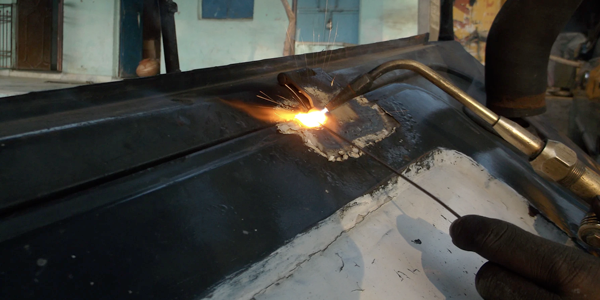High Reliability Soldering
Solder is the glue that holds electronic circuits together. It provides both a physical attachment between components and a conductive bond that permits current flow. Solder consists of an alloy of lead and tin that has low mechanical strength. It’s prone to work hardening from vibration and temperature fluctuations over time, leading to intermittent operation and eventual failure. To achieve maximum service life from a device, it’s necessary to establish consistent soldering habits that produce high reliability joints. The inspection process is primarily visual. In order to detect a bad solder joint, it’s essential to understand what goes into producing a good one first.
Types of Solder
Solder used for electronic repair is available as wire or paste. Most wire solder comes with a rosin core; acid core solder made for plumbing is never used for electronics because it is corrosive. Wire solder has different diameters for different applications, with 0.25” being the most popular. Paste solder consists of tiny balls of solder alloy mixed with liquid flux. It is most often used with a specialized delivery system that applies a tiny amount of solder directly onto the pads of a circuit board. A component is positioned carefully atop the solder and it’s heated with hot air or a conventional soldering iron.
Eutectic solder, an alloy of tin and lead, is best for electronics because it has a narrow temperature range in its plastic state. As solder cools, it changes from liquid to plastic to solid. If the part moves or is subjected to vibration, the solder can crystallize and form a weak bond known as a “cold solder joint.” They appear granular and dull when compared to the smooth, shiny look of a good solder joint.
Lead-free solder is composed of an alloy containing tin, copper, silver, and other metals. It will eventually replace tin/lead solder for most applications. For a technician accustomed to tin/lead solder, the bonds made by lead-free appear to be lumpy, cold joints. They’re dull and granular, yet that appearance is the very best they offer. Reheating the joint does not help and may cause de-wetting. For this reason, reheating should be avoided. Lead-free solder melts at higher temperatures, so soldering iron tips must be treated carefully to prevent corrosion. At present, the use of lead free solder in critical military and aerospace applications is under review.
Soldering Tools
Safety is always your first concern. Soldering irons can inflict third-degree burns in an instant. Burning your own fingers is painfully easy when working under a binocular microscope!
Soldering irons for electronics have grounded tips that cannot induce stray voltages into a circuit. This is important with any component susceptible to damage from electro-static discharge. ESD can degrade performance or cause complete failures.
Rosin flux performs several functions. It breaks down surface tension, allowing solder to flow more easily and wet the metal surfaces. It also helps to clean the metal by removing light contamination from salt, oil, or corrosion.
Inspection
Visual inspection is the main procedure for detecting bad solder joints. Photographic examples can be found in the IPC J-STD-001E, an industry-supported set of standards, as well as the NASA soldering handbook. Some businesses have their own standards that may be more stringent than either the IPC or NASA.
Inspect the circuit board with the naked eye, looking for burnt components, burnt traces, corrosion, or any signs of liquid contamination. Water leaves minerals behind as it evaporates and the minerals appear as a white powder on the board.
Use magnification to examine connectors and any mechanical components like switches or relays. The solder joints on push button switches and toggle switches can become intermittent from mechanical stress. If you’re middle-aged or older, you’ll welcome a pair of binocular magnifiers for this work.
Look for cold solder joints around any components that cycle from hot to cold, especially power transformers and large transistors in the power supply. Repeated expansion and contraction causes solder to work harden and eventually crack. Work hardening appears as a rough, granular solder joint as the alloy crystallizes. Cracks appear as tiny black lines around component leads.
High-density integrated circuits, like flash memory chips, may have leads less that 0.010 inches across. They are best inspected under a binocular microscope. Use a dental probe to look for loose leads, but do so very gently as they are easily bent
Environmental Concerns and Personal Protection
Lead is toxic and should be handled with care. Lead solder is soft enough for trace amounts to be deposited on the skin. Workers handling solder or circuit boards should wear gloves and wash their hands after any contact. The fumes released during soldering contain small amounts of toxins, and for that reason, soldering should be performed in a well-ventilated location.
Many companies treat solder as hazardous waste in order to keep it out of the normal trash stream. There is legitimate concern about lead leaching into ground water from landfills, a concern that brought the development of lead free solders. Technicians are strongly advised to follow procedures when disposing of solder or scrap circuit boards.
Producing high-reliability solder joints can be both tedious and demanding. Some jobs may require hundreds of joints, leading to eyestrain and muscle strain. Most of us can concentrate on such intricate jobs for a limited time each day. Find your personal limits and avoid exceeding them. It’s better to stop before you make a time-consuming and expensive mistake.



